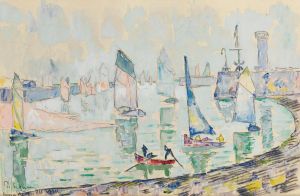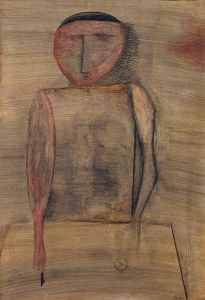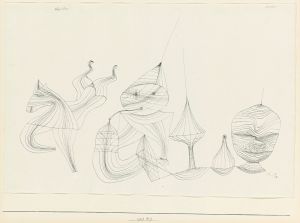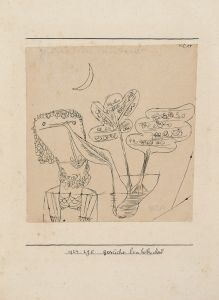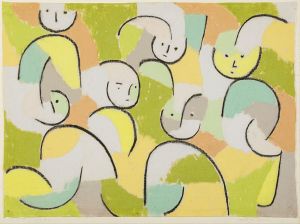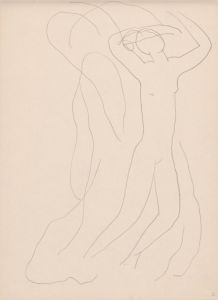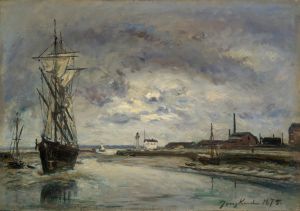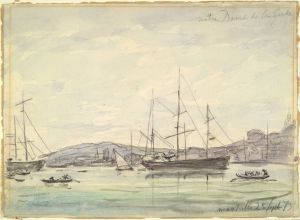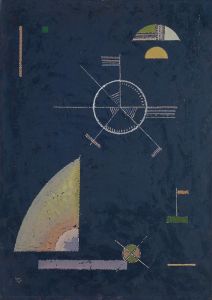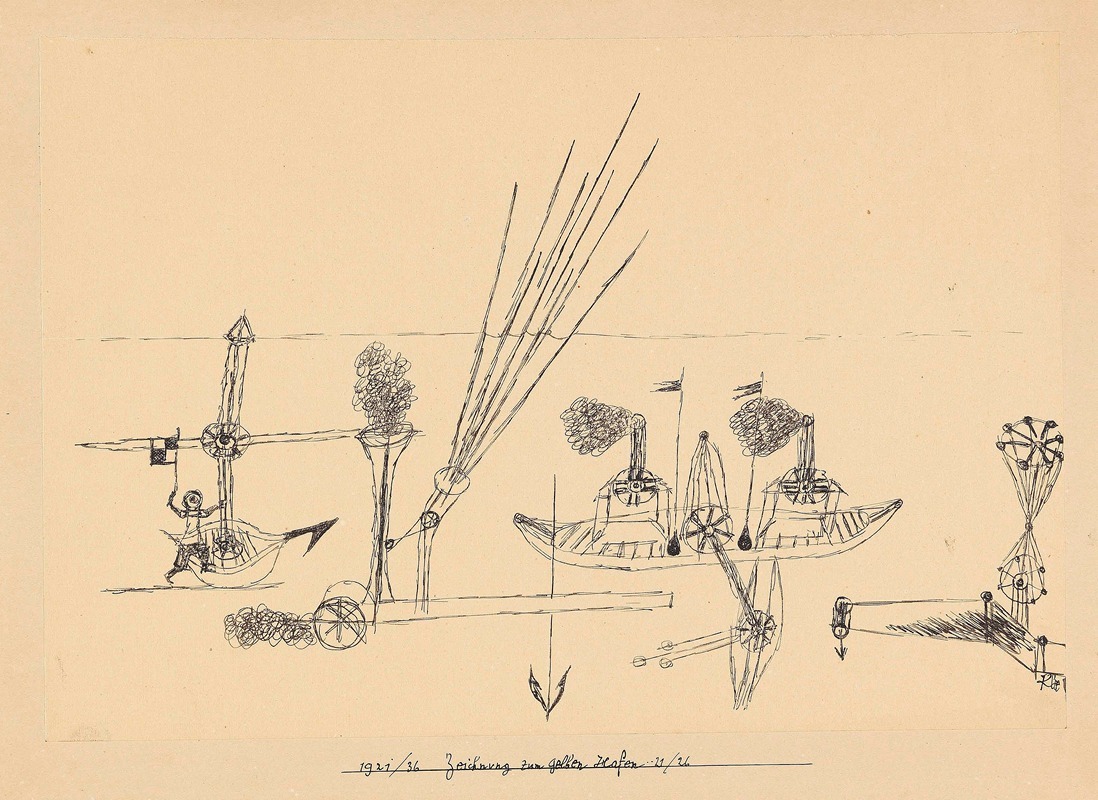
Zeichnung zum gelben Hafen
A hand-painted replica of Paul Klee’s masterpiece Zeichnung zum gelben Hafen, meticulously crafted by professional artists to capture the true essence of the original. Each piece is created with museum-quality canvas and rare mineral pigments, carefully painted by experienced artists with delicate brushstrokes and rich, layered colors to perfectly recreate the texture of the original artwork. Unlike machine-printed reproductions, this hand-painted version brings the painting to life, infused with the artist’s emotions and skill in every stroke. Whether for personal collection or home decoration, it instantly elevates the artistic atmosphere of any space.
Paul Klee's "Zeichnung zum gelben Hafen" (Drawing for the Yellow Harbor) is a notable work by the Swiss-born artist, who is renowned for his highly individual style that was influenced by movements such as Expressionism, Cubism, and Surrealism. Klee's work often features a unique blend of abstraction and figuration, characterized by his use of color, line, and symbolism.
"Zeichnung zum gelben Hafen" was created during a period when Klee was deeply engaged with exploring the interplay between color and form. This particular piece is a drawing, which suggests that it may have served as a preparatory work or study for a larger painting or series. Klee's drawings are often valued for their spontaneity and the insight they provide into his creative process.
Klee's artistic journey was significantly shaped by his experiences and the cultural milieu of his time. Born in 1879 in Münchenbuchsee, near Bern, Switzerland, Klee showed an early interest in both music and art, influenced by his musician parents. He later studied at the Academy of Fine Arts in Munich, where he was exposed to the avant-garde movements that were transforming the art world in the early 20th century.
Throughout his career, Klee was associated with several influential art groups and movements. He was a member of Der Blaue Reiter (The Blue Rider), a group of artists that included Wassily Kandinsky and Franz Marc, who were united by their interest in expressing spiritual truths through art. Klee's work from this period reflects a growing interest in abstraction and the symbolic use of color.
In 1920, Klee joined the faculty of the Bauhaus, a revolutionary art and design school in Germany. At the Bauhaus, Klee taught alongside other prominent artists such as Kandinsky and Lyonel Feininger. His teaching and artistic output during this time were marked by a systematic exploration of color theory and the relationships between visual elements.
"Zeichnung zum gelben Hafen" likely reflects Klee's ongoing exploration of these themes. The title itself, which translates to "Drawing for the Yellow Harbor," suggests a focus on color and perhaps a metaphorical or symbolic interpretation of a harbor. Klee often used titles to provide a poetic or narrative dimension to his abstract compositions, inviting viewers to engage with the work on multiple levels.
Klee's work is characterized by a playful yet profound engagement with the visual language. He often employed a grid-like structure in his compositions, which can be seen as a reflection of his interest in order and chaos, structure and spontaneity. His use of line is both precise and expressive, contributing to the dynamic quality of his drawings and paintings.
"Zeichnung zum gelben Hafen" exemplifies Klee's ability to convey complex ideas and emotions through simple forms and a limited palette. His work continues to be celebrated for its innovation and its ability to transcend traditional boundaries between abstraction and representation.
Paul Klee's legacy as an artist is enduring, with his works held in major collections around the world. His influence can be seen in the development of modern art, particularly in the areas of abstraction and color theory. "Zeichnung zum gelben Hafen" remains a testament to Klee's unique vision and his contribution to the art of the 20th century.





